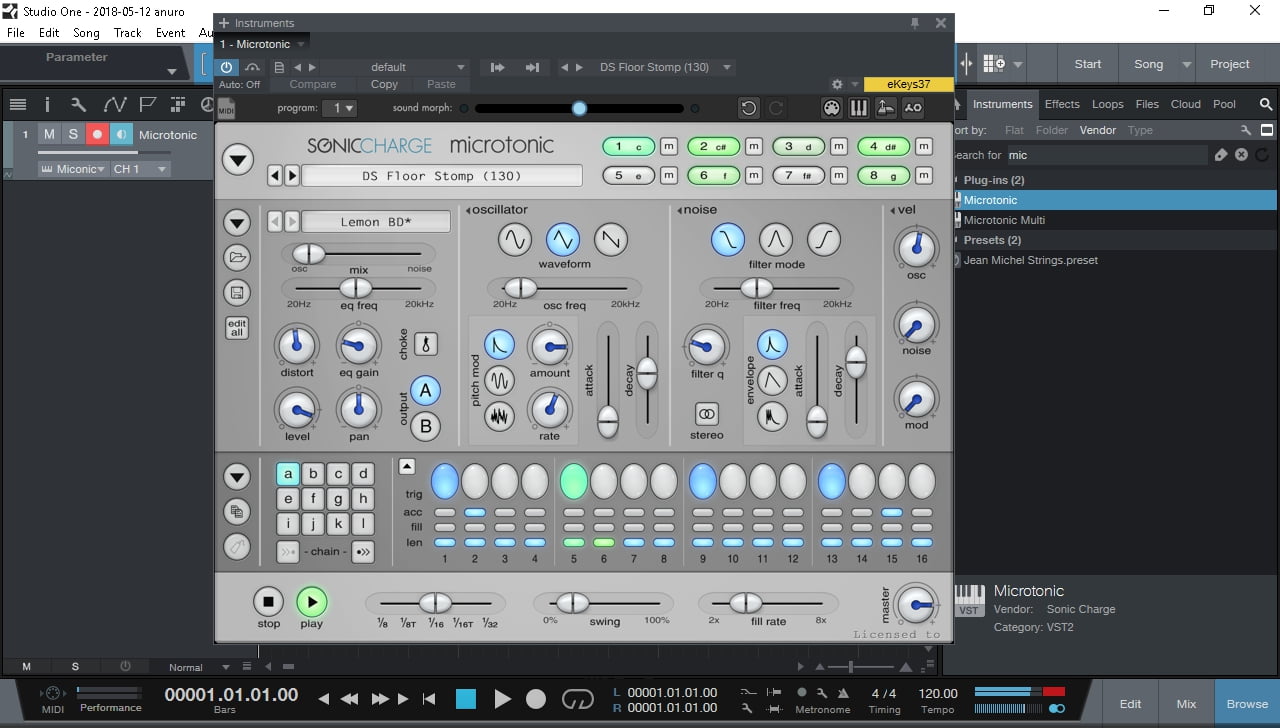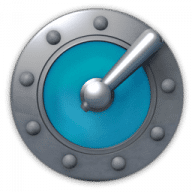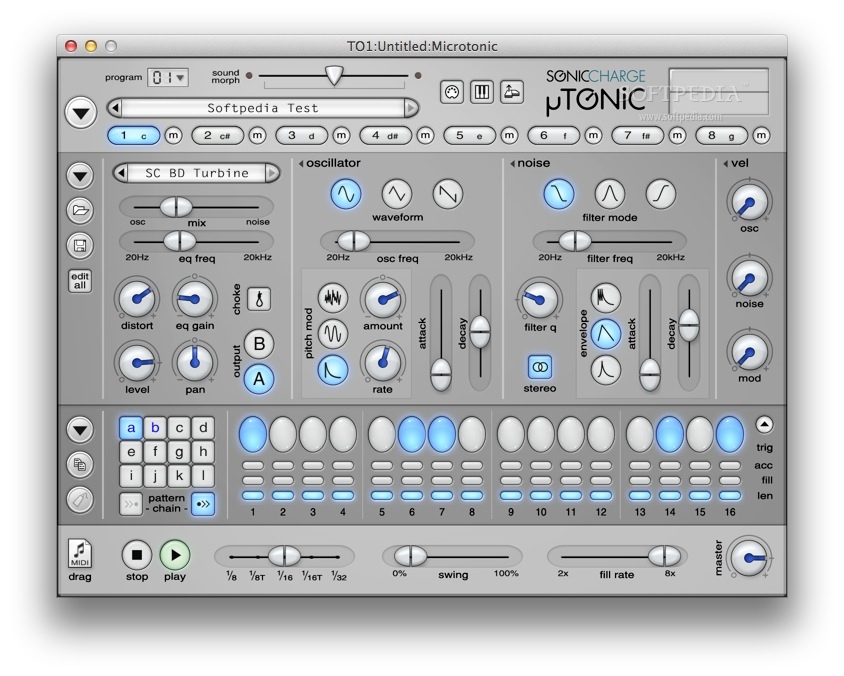Sonic Charge Synplant
Echobode by Sonic Charge is an enjoyable, inspiring, and unique delay effect that features a frequency shifter inside a feedback loop, which creates an array of inharmonic overtones and dreamlike timbres. There's something about the look, virtual feel, and sound that make this hybrid delay a joy to launch.
- Sonic Charge Force will be a video game in the Sonic the Hedgehog series. The game will be released for the Playstation 4 and Xbox One on November 2015. 1 Plot 2 Characters 2.1 Playable Characters 2.2 Non-Playable Characters 2.3 Charge Force 2.4 Other new characters 3 Voice Actors Sonic, his friends and Dr. Eggman will be transported to the future. Sonic and Tails were seperated from Knuckles.
- Philips Sonicare’s advanced technology pulses fluid between the teeth and along the gum-line whilst sonic brush-strokes gently and effectively remove plaque to improve gum health. Sonicare smart brushes deliver up to 62,000 brush movements per minute, giving you the equivalent results of a whole month’s worth of manual.
- Sonic Charge is the creator of music software such as Synplant, Microtonic, Bitspeek, Permut8, Echobode and Cyclone.
- A variety of local, state and federal items are included on your Sonic billing when you have Fusion℠ Voice service. Depending on the service, taxes and fees may vary. Taxes and fees are doubled with Bonded services. The charge is subject to change from time to time as the costs of regulatory compliance change. Local Utility Users Tax.
Sonic Charge Bitspeek
A variety of local, state and federal items are included on your Sonic billing when you have Fusion℠ Voice service. Depending on the service, taxes and fees may vary. Taxes and fees are doubled with Bonded services.


California Lifeline Telephone Service Surcharge
California LifeLine was established by the California Public Utilities Commission in compliance with Public Utilities Code — 871 providing discounted basic residential (landline) telephone services to low-income households.
For current surcharge rates, see http://www.cpuc.ca.gov/general.aspx?id=1124
California Deaf and Disabled Telecom Program Surcharge
The PUC, in compliance with Public Utilities Code — 2881, implemented three telecommunications programs for California residents who are deaf, hearing impaired and/or disabled. These three programs are collectively known as the Deaf and Disabled Telecommunications Program (DDTP).
For more information on the California Deaf and Disabled Telecom Program, see the CPUC website.
For current surcharge rates, see http://www.cpuc.ca.gov/general.aspx?id=1124
California High Cost Fund-A Surcharge
The California High Cost Fund-A (CHCF-A) was implemented in accordance with Public Utilities Code — 739.3. It provides a source of supplemental revenues to 14 small local exchange carriers (LECs) for the purpose of minimizing any rate disparity of basic telephone services between rural and metropolitan areas.
For more information on the California High Cost Fund-A, see the CPUC website.
For current surcharge rates, see http://www.cpuc.ca.gov/general.aspx?id=1124
California High Cost Fund-B Surcharge
The California High Cost Fund-B (CHCF-B) was implemented in accordance with Public Utilities Code — 739.3. It provides subsidies to carriers of last resort (COLRs) for providing basic local telephone service to residential customers in high-cost areas that are currently served by Pacific Bell Telephone Company dba AT&T California, Verizon California Inc., Citizens Telecommunications Company of California dba Frontier Communications of California, and Cox Communications. The purpose of the subsidies is to keep basic telephone service affordable and to meet the Commission's universal service goal.
For more information on the California High Cost Fund-B, see the CPUC website.
For current surcharge rates, see http://www.cpuc.ca.gov/general.aspx?id=1124
California Teleconnect Fund Surcharge
Making Telecommunications Services Affordable for Schools, Libraries, and Others The California Teleconnect Fund (CTF) Program was established by Decision 96-10-066 on October 25, 1996. In this decision, the Commission reaffirmed its commitment to universal service, and in accordance with state and federal directives, created the CTF program to provide 50% discount on selected telecommunications services to qualifying schools, libraries, government-owned and operated hospitals and health clinics, and community based organizations. The program is funded through a surcharge on all end-users of intrastate telecommunications services.
For more information on the California Teleconnect Fund, see the CPUC website.
For current surcharge rates, see http://www.cpuc.ca.gov/general.aspx?id=1124
California Advanced Services Fund Surcharge
The California Advanced Services Fund (CASF) was authorized by the Commission on December 20, 2007, in D.07-12-054 in accordance with Public Utilities Code — 701. It provides grants to 'telephone corporations' as defined under Public Utilities Code — 234.
The total allocation for the CASF is $100 million. An expected two-year program, the CASF will promote universal service in unserved and underserved areas in the state by awarding funding to qualifying certificated applicant carriers. The funding will be used for projects that will a) provide broadband services to areas currently without broadband access and b) build out facilities in underserved areas if funds are still available. Funds shall be collected using an all-end-user surcharge billed and collected by telecommunications carriers.
For more information on the California Advanced Services Fund, see the CPUC website.
For current surcharge rates, see http://www.cpuc.ca.gov/general.aspx?id=1124
California 911 Emergency Telephone Users Surcharge
The California Board of Equalization administers the Emergency Telephone Users Surcharge Law. The surcharge is imposed on amounts paid by every person in the state for intrastate telephone communication service. The service supplier (or billing aggregator authorized by a service supplier) shall collect the surcharge from each service user and remit to the state the amount of the surcharge.
For more information on the California Emergency Telephone Users surcharge, see the California Board of Equalization website.
California Public Utility Commission User Fee
The California PUC User Fee is established by the California Public Utilities Commission. Revenues collected from this fee fund the ammual budget of the Commission for regulating telecommunications utilities. Commission determines annually the appropriate CPUC fee to be paid by the telecommunications carriers. This fee is based on the telecommunications carrier's gross intrastate revenue excluding inter-carrier sales, equipment sales and directory advertising. The purpose of this fee is to finance the Commission's annual operating budget.
For more information on the California PUC User Fee, see the California PUC website.
Property Tax Allotment Surcharge
A property tax allotment surcharge (PTA) is applied to all base voice charges excluding other taxes and surcharges. This is not a tax, but a cost recovery mechanism meant to recover the cost of state-assessed property taxes on telecommunications equipment located in our service areas.
For more information on State-assessed property taxes, please see: the California Board of Equalization website.
Federal Universal Service Fund (FUSF)
What is the Federal Universal Service Fund(FUSF)?
The following explanation is taken verbatim from the FCC regarding the USF:
Because telephones provide a vital link to emergency services, to government services and to surrounding communities, it has been our nation's policy to promote telephone service to all households since this service began in the 1930s. The USF helps to make phone service affordable and available to all Americans, including consumers with low incomes, those living in areas where the costs of providing telephone service is high, schools and libraries and rural health care providers. Congress has mandated that all telephone companies providing interstate service must contribute to the USF. Although not required to do so by the government, many carriers choose to pass their contribution costs on to their customers in the form of a line item, often called the 'Federal Universal Service Fee' or 'Universal Connectivity Fee.'
The current incarnation of the FUSF was introduced into tax law created by United States Congress, via the FCC in 1998. Title 47, Code of Federal Regulations, Sections 36, 54, and 69.
The Federal Universal Service Fund surcharge is assessed on all interstate and international voice charges incurred by customers during the billing period. The exact surcharge rate is updated on a quarterly basis by FCC.
This surcharge is imposed for the purpose of providing telecommunications services at an affordable price to schools, libraries, rural health care providers, and low-income customers. The tax is a percentage of the interstate portion of the long distance charge on your bill. The surcharge is assessed to all telecommunications companies with interstate operations, including long distance carriers, wireless companies, pager companies and payphone companies. The Federal Communications Commission (FCC) regulates this surcharge.
This surcharge appears by many names. The following are some ways in which the FUSF charges may be represented on bills from other companies, including your local and long distance telephone carriers:
- Federal Universal Service Fee
- Federal Universal Service Fund
- Federal USF - ADSL
- FED USF - ISDN PRI
- FED USF - CENTREX
- FED USF - Special Access
- Universal Connectivity Charge
- Universal Service Carrier Charge
Where can I get more information about the FUSF?
The best resource for information about the particulars of the FUSF is the FCC website at www.fcc.gov.The FCC website is a good place to find information regarding the telecommunications industry in general.
Federal Subscriber Line Charge
The Subscriber Line Charge is a fee paid to the local phone company that connects you to the telephone network. Local telephone companies recover some of the costs of telephone lines connected to homes or businesses through this monthly charge on your local telephone bill. Sometimes called the federal subscriber line charge, this fee is regulated and capped by the FCC, not by state Public Utility Commissions.
For more information on the Federal Subscriber Line Charge, see the Federal Communication Commission website.
Federal Interstate Telecommunications Service Provider (ITSP) Fee
As set forth in 47 U.S.C. 159(a), the Commission is required by Congress to collect regulatory fees to recover the regulatory costs associated with its enforcement, policy and rulemaking, user information, and international activities. Licensees and regulatees are assessed fees calculated as set forth in (See Assessment and Collection of Regulatory Fees for Fiscal Year 2010, Report and Order, 75 FR 41932 at 1 (July 19, 2010) ('FY 2010 Regulatory Fees Report and Order')).
For more information on the Federal Interstate Telecommunications Service Provider (ITSP) Fee, see http://www.fcc.gov/fees/regfees.html
FCC Telecommunications Relay Services (TRS)
TRS is a telephone transmission service that allows persons who have hearing or speech disabilities or are deaf-blind, to place and receive telephone calls. TRS is available in all 50 states, the District of Columbia, and some of the U.S. territories for local and long distance calls. The assessment rate for 2011-2012 is 1.058% of all interstate and international telephone charges.
For more information on the TRS program, see http://transition.fcc.gov/cgb/consumerfacts/trs.pdf [PDF]
Regulatory Recovery Surcharge
A Regulatory Recovery Surcharge is assessed on all base voice charges excluding other taxes and surcharges, to cover costs associated with the collection and payment of government imposed taxes and fees, and to recover the costs of regulatory advocacy and compliance with regulatory requirements including local telephone number portability. This surcharge is not a tax which the government requires us to collect from customers. The charge is subject to change from time to time as the costs of regulatory compliance change.
Local Utility Users Tax
Local telephone taxes are charged by many municipalities. These are voter approved taxes which utility providers are obligated to collect and remit to your city. For specific rates for your city, the UUTInfo website provides a helpful reference. You can also contact your city's finance department for specific information about utility users tax.
San Francisco 911/Access Line Tax
For subscribers in the city of San Francisco, Proposition O created a voice Access Line Tax, formerly called the 911 tax. It is intended to provide revenue for such general fund services as may be determined by the Board of Supervisors including, without limitation, police, fire, and emergency services.
Estimated Taxes and Fees:
Estimated total voice taxes and fees for Fusion, subject to change based upon federal, state, local and fee changes. Please note, estimated taxes and fees below do not include FUSF charges on international per-minute charges. If international usage charges are incurred then additional FUSF will be assessed on those amounts.


